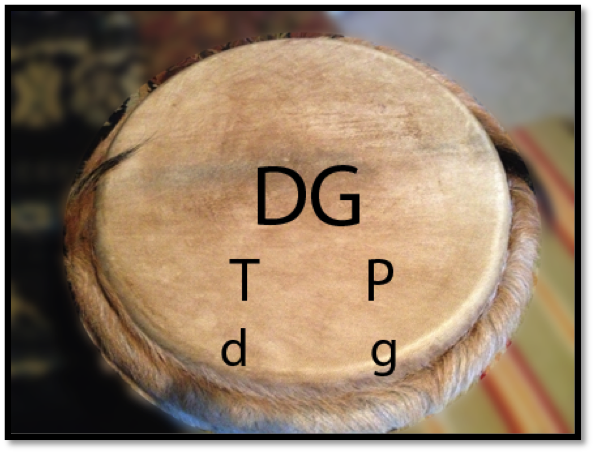PDF
2.0MB
Music – Rhythm notation guide
The djembe and playing ensemble
Djembe – The djembe is a standard West African hourglass-shaped hand drum typically made from wood and goat skin. If you do not have djembes available for your classroom, you may consider making djembes using inexpensive materials as demonstrated in this package of practice.
Ensembles – Djembes come in a range of pitches from lowest to mid-range to high. They are often played ensemble and in unison. The lower drums are usually bigger in size and emit strong bass tones, ideal for playing a repeating series of bass tones as the foundation of a pattern. Mid-range drums are usually medium sized and used to play a range of repeated or varying patterns that add complexity, varied parts and polyrhythm beats. Finally, smaller djembes emit higher tones and are often used for adding interest through lead parts, breaks and solos.
Basic notation for djembe
Many djembe instructors use a notation system based on the traditional Yoruba 'oral notation' terminology as taught by Babatunde Olatunji. This notation system makes use of the standard range of sounds produced by the West African djembe and clearly differentiates right hand from left hand. This is a very useful system to introduce students to djembe playing as it promotes alternating use of both the left- and right-hands. Alternating hands are required for faster speeds and more complicated rhythms.
|
G |
Gun ('Goon') |
= bass beat with strong hand in the centre of the drum head |
|
D |
Dun ('Doon') |
= bass beat with other hand |
|
g |
go ('go') |
= rim tone with strong hand: middle joint of fingers; fingers closed |
|
d |
do ('doe') |
= rim tone with other hand |
|
P |
Pa |
= slap with strong hand: sharp glancing stroke with fingertips |
|
T |
Ta |
= slap with other hand |
|
P or T |
|
= slap muffled by other hand placed first on head to dampen it |
|
- : |
|
= unplayed note, marking a place to feel the underlying pulse or timing |
|
(G) |
|
= parentheses indicate optional note |
Map of notes on djembe head
(based on right-hand player – reverse for left-hand player)
